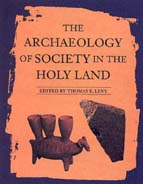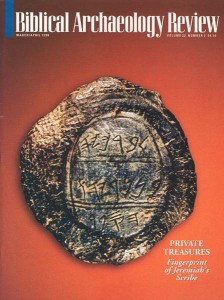The Archaeology of Society in the Holy Land
Thomas E. Levy, ed. (New York: Facts on File, 1995) 624 pp., $80.00

BAR readers know that a revolution of sorts has occurred in Biblical archaeology over the past five to ten years.
This revolution is characterized by a paradigm shift away from a preoccupation with Biblical history per se, to a more complex methodology that includes multidisciplinary studies—enabling archaeologists to view ancient Palestine from a much broader perspective than the older paradigm allowed. This perspective, as described by Thomas Levy in his preface to the volume under review here, “centers on the human ecosystem which emphasizes the interdependence of cultural environmental variables.”
Contributors to The Archaeology of Society in the Holy Land were asked to discuss the general chronological periods assigned to them by using the methodology of the Annales school developed by French historians, most notably Fernand Braudel. The emphasis of this school is on the dynamic processes, particularly socioeconomic and environmental, that bring about change, both short- and long-term, in any given period. Levy’s goal in appropriating this method is to explain “culture change in the Holy Land over a period of some one and a half million years.”
Already a library member? Log in here.
Institution user? Log in with your IP address.

